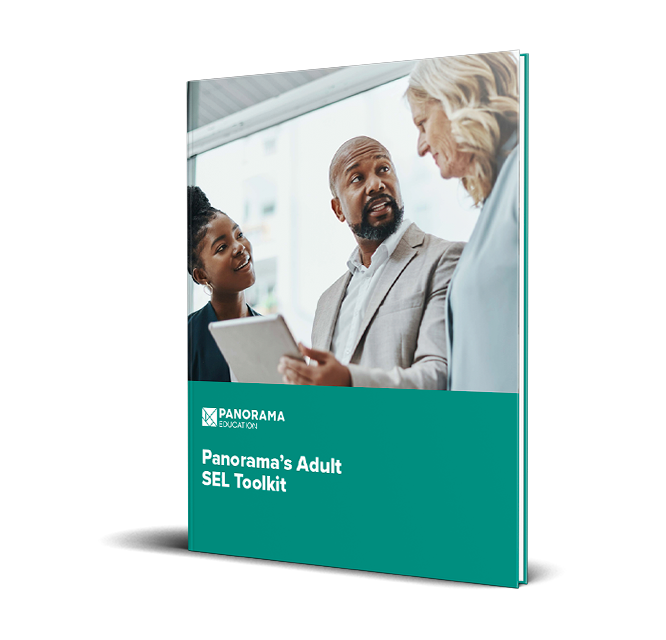Educators across the country have gone through one of the most trying years of their careers, and teacher burnout is on the rise, causing many to leave the profession entirely. The concept of burnout is not new, nor is it exclusively in response to the COVID-19 pandemic. The stressors of the past year have exacerbated many underlying issues within our schools and districts.
So how can we support our teachers? You might immediately think of self-care strategies and stress management techniques such as mindfulness exercises or massages. While these things can be helpful for some, they mostly treat symptoms of burnout and may actually put a further burden on the teacher.
Teachers cannot solve burnout for themselves—the conditions that cause extreme stress are systemic. Long hours, high workload, feelings of inefficacy, and lack of resources are all common causes of educator burnout. School and district leaders can play a vital role in addressing these root causes by making systems-level changes. Some are big, some are small, but all are meaningful. [Tweet this]
Learn how you can help your faculty avoid teacher burnout by giving them the support they need to feel valued, energized, and empowered to teach.
|
What is burnout? Burnout describes a specific type of work-related stress: “a state of physical or emotional exhaustion that also involves a sense of reduced accomplishment and loss of personal identity.” In 2019, the World Health Organization classified burnout as an occupational phenomenon. While not a medical condition in itself, this state of exhaustion can have a significant impact on physical and mental health, as well as relationships and job performance. |
1. Elevate teacher voice to understand and address what they need.
[Tweet This]
One of the main causes of burnout is a feeling of inefficacy. This could be that a teacher feels they aren’t doing their job effectively, that they aren’t valued in their position, or that what they do doesn’t matter. School and district leaders can alleviate some of these feelings by making sure teachers have opportunities to make their voices heard.
Giving a survey is one method district leaders can use to elevate teacher voice. Surveys give educators a platform to share valuable feedback, and give district leaders the data they need to take meaningful action. Teacher and staff surveys can invite productive and courageous conversations in school teams about well-being, professional learning, school climate, and other key topics.
Ask teachers what they need, listen to their feedback, and take action. Here are some examples of questions you can ask your teaching staff:
- How supportive has the school been of your growth as a teacher?
- What resources do you need to adequately support your students’ learning?
- How positive is the influence of the school leaders on the quality of your teaching?
- How challenging is it to communicate with the families of your students?
- How much do your school leaders care about you as an individual?
- What can school or district leaders do to better support your well-being?
- What has helped you most in managing work-related stress?
- If you could change anything about working at your school, what would you change?
Understand teacher perceptions of equity and inclusion at school with these 34 questions.
2. Create systems to build efficacy and resilience. [Tweet This]
Burning out can make us feel alone and disconnected, and reaching out for help can feel overwhelming. When we infuse adult social-emotional learning skills into our daily practices, we create opportunities for positive relationships and community building and support teacher efficacy and resilience.
- Invite collaboration. When educators work closely with their fellow teachers, great things can happen. Collective teacher efficacy is when teachers perceive that together they make an educational difference to their students. Give teachers opportunities to work together in and outside of the classroom. Having a strong sense of collective efficacy amongst teachers in your school or district can impact the personal self-efficacy of individual teachers, which can lead to more positive outcomes for students and lower rates of burnout.
- Build relationships. If you don’t have one already, consider implementing a teacher mentorship program. While these programs often involve new teachers being paired with more experienced educators, they don't have to. Simply having a partner within the school can be a huge help to teachers who may otherwise feel isolated. Work with educators in your district to learn what they would find most helpful
- Celebrate successes. Create a culture of recognition. Celebrating wins, no matter how small, can help boost positive feelings, make teachers feel more engaged in their jobs, and encourage a sense of efficacy.
- Prioritize adult SEL. Adult social-emotional learning (SEL) is just as important as student SEL -- after all, if teachers are expected to teach these skills to students, they need to build their own capacity. Equip your teachers with tools and opportunities for learning. Organizations like FuelEd and the National SEED Project offer professional development to build resilience and capacity in educators.
Drive system-level change in 2022-23 with the Adult SEL Toolkit.
3. Provide teachers with tools, resources, and sustainable supports.
[Tweet This]
“Learning recovery is top of mind.”
“We need to focus on SEL.”
“We need a stronger family-engagement practice.”
Educators want to support their students. But when you consider everything a teacher does in a school day, it’s understandable why they might feel like social-emotional learning or a family engagement strategy is just one more thing on an already overfilled plate.
This is where school and district leaders have the power to help. Embed systems for these initiatives within the fabric of your district and make them a regular part of school life, not something teachers have to figure out for themselves.
- Communication is key. Ask teachers what resources they need and what support looks like for them. Work together to find solutions that work in the context of your district. For example, district leaders at Elizabeth Public Schools in New Jersey were able to offer support for social-emotional learning to classroom teachers through members of their mental health team.
- Build capacity for family engagement. If your family engagement strategy mostly consists of classroom-specific events run by teachers, then it’s time to rethink your practice. Research shows that family-school partnerships are more meaningful and effective for students, families, and educators when they are embraced by district leadership, embedded in all strategies, and supported with resources and infrastructure.
- Consider an SEL curriculum. Lesson planning for academic subjects and social-emotional learning can be incredibly overwhelming for teachers. An SEL curriculum might be the right fit for your school or district. Providers specialize in delivering comprehensive, evidence-based programs that produce positive social-emotional and academic outcomes for students. These programs also offer lessons and guidance for educators.
- Offer resources. Provide teachers with tangible, low-lift teaching strategies and classroom management techniques they can integrate into their everyday lessons and practices. This can be particularly helpful with SEL lessons. Whether your teachers are working with elementary, middle, or high school students, SEL skills and competencies can be woven into academic work at any grade level.
4. Cultivate a culture of wellness. [Tweet This]
The 2020-21 school year was one for the books. We cannot know what the future will bring, but we can take care of ourselves and our community. Prioritizing student and educator well-being leads to a more positive school environment. [Tweet This]
- Unplug. Constant access to technology can make it difficult to set boundaries around communication, but breaks are imperative for a healthy work-life balance. Set expectations for when faculty and staff should “unplug.” Let your school community know when teachers can be expected to check emails (for example, not before 6 a.m. and not after 7 p.m.) and give a timeline for when they can expect a response (for example, within 24 hours). Model these behaviors for your teachers as well to show your support for these boundaries.
- Meet with meaning. Make sure meetings are meaningful and mindful. Be respectful of timing, set clear and precise agendas, and, if possible, create options for remote participation. Flexible meeting options are game-changing for educators -- it could mean the difference between eating dinner at home with your family at the end of the day and driving through rush-hour traffic to pick up your child from care. (Tweet this.)
- Make connections. Work with outside organizations focused on educator well-being. For example, Happy Teacher Revolution offers trainings and resources to help educators advocate for their needs and create supportive teaching communities.
Support educator resilience with the Adult SEL Toolkit for 2022-23

.jpeg)




